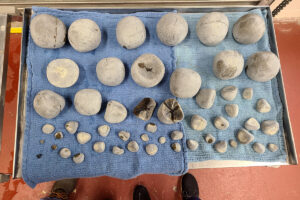UKVDL Map of the Month: Potomac Horse Fever

This month’s featured map is Potomac horse fever (PHF). Potomac horse fever is caused by Neorickettsia risticii, an organism found in some flukes (a wormlike parasite) that infect aquatic snails and insects (such as caddisflies and mayflies). Horses can be exposed by inadvertently ingesting aquatic insects infected with flukes carrying the bacteria or by drinking flukes directly from rivers or streams. However, even horses residing far from water bodies aren’t out of PHF’s reach as vectors can be attracted to barn and stall lights and inadvertently end up in horses’ feed or water sources.
The incubation period is 10 to 18 days. Initial clinical signs include anorexia, lethargy, and fever, followed by enterocolitis, dehydration, and diarrhea. This could progress to toxic shock, laminitis, or death (30% mortality rate). The disease can also cause abortion in pregnant mares and endotoxemia.
As of July 23, the University of Kentucky Veterinary Diagnostic Laboratory (UKVDL) had seen five positive PHF cases this month
Create a free account with TheHorse.com to view this content.
TheHorse.com is home to thousands of free articles about horse health care. In order to access some of our exclusive free content, you must be signed into TheHorse.com.
Start your free account today!
Already have an account?
and continue reading.
Related Articles
Stay on top of the most recent Horse Health news with
















